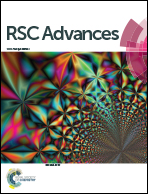Structure–property relationship of polycarbonate/polypropylene alloys prepared via eccentric rotor extruder
Abstract
In this work, PC/PP alloys were respectively prepared by eccentric rotor extruder (ERE) and twin screw extruder (TSE). By analyzing the mechanical properties, morphology, rheological behavior and thermal properties of PC/PP alloys, the effects of processing methods on the two-phase structure and properties of PC/PP alloys were studied. The results showed that the size of the dispersed phase of PC/PP alloys was smaller and its distribution was more uniform under the elongational flow field provided by ERE. Compared to the typical sea-island phase structure provided by the shear flow field, the morphology of the alloys showed a “sea-island-fiber” phase structure under the elongational flow field. Compared to the TSE, the notched lzod impact strength of the PC/PP alloy prepared by ERE increased by 31.0%. ERE played a stronger effect on the dispersion and distribution of PC/PP alloys, which was also confirmed in the results of dynamic rheology analysis and differential scanning calorimetry. The blending method dominated by the elongational flow field could prepare PC/PP alloys with better properties.



 Please wait while we load your content...
Please wait while we load your content...